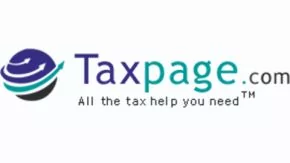Who needs to file T1135?
All Canadian resident taxpayers must file Form T1135 if, at any point during the year, they owned specified foreign property (SFP) with a total cost of more than $100,000 CAD—even if some or all of the property was sold before year-end. This requirement applies to individuals, trusts, corporations, and partnerships, with certain exceptions.
What is specified foreign property?
Specified foreign property, as defined by the Income Tax Act, includes a wide range of assets held outside Canada. These include:
- foreign bank accounts,
- shares in foreign companies (even if held in Canada),
- Canadian shares held abroad, interests in non-resident trusts, foreign debts (like bonds),
- life insurance policies from a foreign issuer,
- cryptocurrency
- And real estate outside Canada (unless mainly for personal use)
Calculation of the adjusted cost base of a foreign life insurance policy
For the purposes of Form T1135, a Canadian tax resident needs the cost for a foreign-issued policy, and the process may be complex. The ACB is the amount by which premiums paid by the policyholder exceed the Net Cost of Pure Insurance. However, the Net Cost of Pure Insurance is a Canadian concept, so a lot of foreign insurers won't have that calculation. Oftentimes, they may have their own cost basis calculation, but it doesn't line up with the Canadian definition. That foreign version of the ACB may not be in accordance with the Canadian definition. In this case, Canadian taxpayers likely need to hire accountants and actuaries to confirm the ACB amount.
An "exempt policy" is a life insurance policy that meets specific criteria outlined in section 306 of the Income Tax Regulations. These rules apply to each policy individually and require actuarial calculations and information that only the issuing insurer can provide.
Generally, an exempt policy is one primarily intended to provide a death benefit, rather than to serve as an investment or savings vehicle. A life insurance policy issued by a non-resident insurer is not automatically excluded from being classified as an exempt policy. It may qualify, provided it meets the conditions set out in section 306.
However, conducting the annual exempt testing for a foreign life insurance policy typically requires specialized actuarial expertise, which can be costly. Additionally, if the policy is denominated in a foreign currency, values must be converted to Canadian dollars during testing, which can further complicate the process. As a result, policyholders may face challenges in obtaining the necessary data in a format suitable for Canadian tax reporting.
Voluntary disclosure application
Failure to file the T1135 return will lead to a penalty of $25 per day (minimum $100, maximum $2,500) and $500 per month for knowingly not filing or for gross negligence, to a maximum of $12,000. After 24 months, the taxpayer will be liable for an additional 5% based on the cost of the specified foreign property held by the taxpayer if he continues to knowingly not file or if his actions amount to gross negligence.
Luckily, taxpayers who failed to file their T1135 returns on time can still rely on the voluntary disclosure program (VDP) CRA Voluntary Disclosure Program | T1135 Voluntary Disclosure, which offers 100% penalty and partial interest relief if accepted.
To qualify for the VDP, your disclosure must meet all five of the following conditions:
- Voluntary – You must come forward before the CRA contacts you about the issue.
- Complete – You must provide all relevant information and documents.
- Involves a Penalty – The disclosure must involve a potential application of a penalty (e.g., late filing, gross negligence).
- At Least One Year Past Due – Generally, the information you're disclosing must be at least one year past due (with limited exceptions).
- Includes Payment – You are expected to pay the taxes owing (or make arrangements) at the time of disclosure.
In addition, the CRA has the discretion to determine whether to accept a taxpayer's voluntary disclosure application or not; therefore, it is highly recommended that a taxpayer consult an experienced Canadian tax lawyer before applying.
Pro tax tips – the ACB of a foreign life insurance requires professional calculation
Overall, the ACB of a life insurance policy from a foreign issuer may not always be available. Taxpayers should get advice from a top Canadian tax lawyer to confirm the numbers. If it turns out that a taxpayer failed to file a T1135 on time, then a voluntary disclosure application may be the best solution to fix the error with reduced interest and penalties.
FAQ:
For T1135 purposes, how do you calculate the cost of a foreign life insurance policy?
The cost of a foreign life insurance policy may be provided by the foreign issuer, but the numbers may not always align with the Canadian definition. Therefore, it is highly recommended that taxpayers consult with a Canadian accountant or actuary to confirm the number.
What is the voluntary disclosure program?
The VDP (CRA Voluntary Disclosure Program | T1135 Voluntary Disclosure) is a policy of the CRA or the Canada Revenue Agency to allow non-compliant Canadian taxpayers to come back into the tax system. In this program, taxpayers in Canada can correct or make changes to the tax returns they have already filed in exchange for interest and penalty relief.

